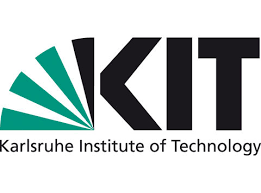Karlsruhe Institute of Technology: Sustainable extraction of raw materials from thermal springs in Chile
Whether lithium, cesium or even gold: In addition to energy, geothermal water can also contain mineral treasures. In the BrineMine research project, researchers from the Karlsruhe Institute of Technology (KIT) want to harness this potential and support more sustainable raw material extraction in Chile. Together with their partners, they develop strategies and methods for the extraction of natural resources directly in geothermal power plants. Not only should energy and minerals be obtained, but drinking water as well. Important process steps have already been successfully tested in a demonstration system.
Natural resources from Chile are of great importance for Germany. According to the World Bank, thousands of tons of valuable minerals are imported from the South American country every year, including for lithium-ion batteries. But mining is associated with ecological and social problems: “The use of the limited fresh water resources in northern Chile for mining regularly leads to conflicts with the local population,” says Professor Thomas Kohl from the Institute for Applied Geosciences (AGW) at KIT. “The north of Chile is one of the driest areas on earth, but it has extensive geothermal resources. With innovative ‘combined power plants’, not only can electricity be generated there in a climate-friendly way, but drinking water and even mineral resources can also be obtained at the same time.
The AGW looks back on a long-term cooperation with geothermal research in Chile. The central partner is the Centro de Excelencia en Geotermia de Los Andes (CEGA). “BrineMine shows how well the cooperation between Chilean and German institutions works,” says Professor Diego Morata, the director of the CEGA. “Europe and the Andean region can benefit equally from sustainable development through the combination of geothermal energy and green mining.”
The first demonstration system is on the Upper Rhine Graben
Part of the transdisciplinary research initiative is dedicated to the geochemical and geothermal potential of the thermal springs in Chile in order to identify suitable locations. In a data collection, the raw material potential is determined with a focus on the thermal fields of the Atacama Desert. The Fraunhofer Institute for Solar Energy Systems (ISE) is also developing the system technology for later industrial use in the BrineMine project. This is based on a new process chain: First, heat from the geothermal brine is used for energy purposes. The cooled and still relatively weakly concentrated liquid is then pre-concentrated by reverse osmosis, while drinking water is obtained at the same time. The brine concentrate is then further concentrated to saturation by membrane distillation. “The thermal energy requirement of the entire process can be covered directly from the waste heat from the power plant process,” says project manager Dr. Joachim Koschikowski from ISE. “We have already set up a demonstration system in a geothermal power plant in the Upper Rhine Graben and successfully integrated central components into ongoing power plant operations.”
Processes are optimized for the extraction of raw materials
Most of the process steps are based on tried and tested procedures, but they have not yet been combined in this way. This requires detailed research because, for example, both concentration and cooling increase the risk of the formation of silicate deposits. “Conventional strategies would severely limit the extraction of raw materials. If the water is not treated, the technical system components will be damaged, ”explains Valentin Goldberg from the KIT AGW. By changing the pH value in the brine and adding divalent cations (e.g. calcium or magnesium), a solution has now been found. “Our method of removing silicate is quick and effective. Above all, however, it has no negative impact on the extraction of raw materials, ”says Goldberg.Geothermics .
Before the first systems can be installed in Chile, further detailed questions about the process must be clarified. In addition, specific models for economical operation are also being developed.
About BrineMine
BrineMine was founded in 2019 by Professor Thomas Kohl and Dr. Sebastian Held initiated. The German-Chilean research consortium is coordinated by the Fraunhofer Institute for Solar Energy Systems (ISE). Other project partners besides KIT are the companies Geothermie Neubrandenburg (GTN) and SolarSpring membrane solutions in Germany as well as Fraunhofer Chile and the Centro de Excelencia en Geotermia de Los Andes (CEGA) in Chile. The Federal Ministry of Education and Research is funding the project with over 1.5 million euros. The great interest of the Chilean industry in BrineMine became clear at a webinar of the German-Chilean Chamber of Commerce and Industry, which hundreds of participants attended. The Chilean Ministry of Energy also supports the project.

